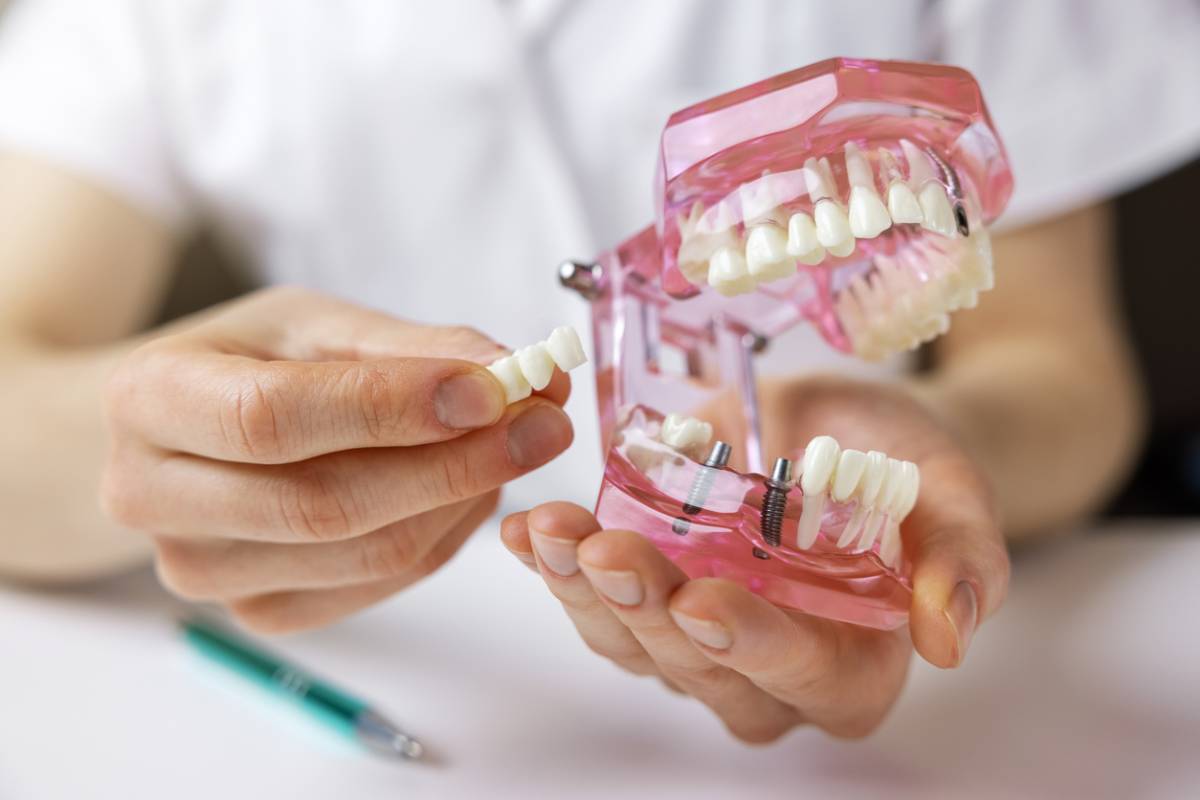Both dental bridges and dental implants are suitable solutions for restoring missing teeth, and both come with their own benefits. However, dental implants are often thought to be a more long-lasting and comfortable restoration option compared to dental bridges. That is why many patients who have dental bridges ask our dental implants specialist: “Can you replace dental bridges with implants?” In this article, we will answer this question and compare two dental restoration solutions.
What Is a Dental Bridge?
Dental bridges usually consist of two parts: abutments that support the bridge and pontics that look and function as natural teeth. In many cases, the surrounding teeth are used to support the bridge. This restoration solution “bridges” the gap where a tooth used to be. Several types of dental bridges can be chosen according to the needs of a patient and the size of the gap. In most cases, a dental bridge can replace 1 to 3 missing teeth in a row.
Pros and Cons of Dental Bridges
There are several advantages of choosing dental bridges as a restoration solution:
- The material of a dental bridge can be matched in color to your natural teeth
- A dental bridge prevents the surrounding teeth from shifting into the gap, changing the way your smile looks
- A dental bridge restores the chewing and speaking ability
However, there are several disadvantages as well:
- In some cases, the surrounding teeth can be damaged if they are not strong enough to support the bridge.
- Dental bridges do not prevent the loss of underlying bone structure. When you lose your natural teeth, the bone stops being stimulated, which leads to it “shrinking.” This can lead to a sunken appearance or other changes in the facial structure.
What Is a Dental Implant?
A dental implant typically consists of a metal post that is surgically placed in the jaw bone and a dental crown. The metal post fuses with the bone over time and acts like a root of your missing tooth, providing a secure and stable support for the crown that is attached to it.
Dental Implants Versus Dental Bridges
- Dental implants last much longer, compared to dental bridges. The lifespan of implants is 10 to 15 years, while dental bridges tend to be replaced every 5 to 7 years.
- Dental implants are not supported by the surrounding teeth, compared to bridges. Thus, there is no risk of damaging them.
- Dental implants, being placed directly into the bone, continue stimulating it, just like the roots of your natural teeth. This prevents the loss of the jaw bone density and changes in facial structure of a patient. Dental bridges, being placed above the gum, do not have this effect.
- Dental implants function very similarly to natural teeth and have a great biting force—up to 95% of your natural teeth. This makes them a more stable and reliable restoration solution compared to dental bridges.
- Dental bridges can be more demanding when it comes to oral hygiene routine, and there is a bigger risk of gum disease and tooth decay and cavities in the surrounding teeth.
Can You Replace Dental Bridges With Implants?
In most cases, rental bridges can be replaced by dental implants. Patients might want to replace their bridges with implants if:
- The bridges are putting too much pressure and damaging the surrounding teeth that support them
- For aesthetic purposes
- The bridges are old and due to replacement
- The patient is concerned with volume loss in the underlying bone
The important point when making a decision about replacing dental bridges with dental implants is whether or not there is enough bone volume to support the new implant. As we mentioned before, the implant is placed directly into the bone. If the patient has suffered from significant bone loss due to the long absence of natural teeth, there might not be enough tissue to efficiently hold the implant in place.
In cases of insufficient bone width or density, your dentist can suggest restoring the bone. This is done using dental grafting before placing dental implants. The process of bone restoration might take several months, but it is necessary for the success of the dental implants procedure.
Make an Appointment Today
If you are considering upgrading your dental restoration solution, do not hesitate to make an appointment with a local leading periodontist at our office. We will carefully examine your case and suggest the appropriate plan of treatment. Dental implants can significantly improve your oral health and quality of life in the long run. We are looking forward to welcoming you to our office.



